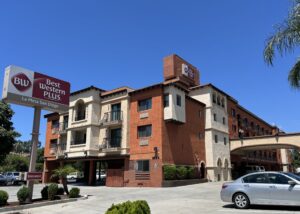Hotels Check-in to Water Saving
Hotels Check-in to Water Saving
Laguna Beach Independent
09/26/15
Hotels Check-in to Water Saving
By Tim J. Randall
https://www.lagunabeachindy.com/hotels-check-in-to-water-saving/
Even before drought struck California, hotel guests routinely entered rooms outfitted with eco-conscious messages, encouraging travelers to reuse towels and forego a daily change of bedding.
That turned out to be the easy first step. Now, in addition to asking guests to curb their water usage, hotel operators are coming up with even more ingenious solutions to tighten up their water use, according to Andy Brunhart, general manager of the South Coast Water District, which serves South Laguna and nearby cities.
He’s pleased because tangible results by hotels helped the district surpass its 24 percent water reduction target by achieving a 33 percent drop in use in July as compared to July of 2013 figures. And hotel operators are equally pleased by the cost savings.
At Montage Laguna Beach, a new procedure at the resort’s three restaurants saves 3,000 gallons of water a week, said managing director Rick Reiss. “We have taken the drought incredibly serious. We began to research possibilities to go above and beyond the state of California mandates,” he said.
An article written by the executive chef at the Post Ranch Inn in Big Sur provided a model Reiss vowed to replicate. “The standard method is for the kitchen steward to wash food off of plates before they are loaded in the dishwashers. The new method, which we adopted, converted the water sprayers to compressed air at a cost of $1,900,” he said.
Reiss also points to significant savings through the use of recycled water for irrigation of turf and landscaping. “We understand that we use a lot of water and now we have two-thirds of our property using recycled water,” he said.
At the St. Regis in Dana Point, chief engineer Dan Moore recently converted the hotel laundry into a water reclamation unit. “We were using between 5 to 9 million gallons of water a year, essentially washing laundry and dumping the water,” he said. With filtration and piping, the new system allows water to be reused 3.5 times. “The outcome has been fantastic. In the first month we saved 900,000 gallons, well above our expectations,” said Moore. While Moore could not provide the financial cost of the conversion, the expected cost savings on 900,000 gallons per month are about $16,000, according to Brunhart.
Water conservation was task number one for Mark Christy, who with partners in 2013 acquired the nine-hole golf course and hotel property renamed The Ranch at Laguna Beach. “We began work on this conversion even before taking title to the property, as this conversion to reclaimed water was always a top priority of our group,” Christy said. “We got this ball rolling roughly three years ago.”
The results of switching to recycled water for landscaping on the 80-acre property are substantial. The course requires 20 million gallons of water a year and since February the property has cut its reliance on drinking water by 97 percent, said Kurt Bjorkman, Ranch general manager.
Bjorkman could not provide specifics on the cost of retrofitting, indicating only that the project was “in the hundreds of thousands of dollars,” he said.
At the Ritz Carlton in Laguna Niguel, hotel managers have focused on the garden and grounds to conserve water. A spokesperson at the resort pointed to several water-squeezing initiatives, such as using drought tolerant plantings, curbing irrigation to once a week to comply with water district restrictions, and installing drip rather than spray irrigation.
Taken in totality these approaches are making a considerable dent in water usage across California, according to Alan Reay, president of Atlas Hospitality Group, an Irvine-based hotel broker. “Definitely hotel conservation programs are helping the situation, and it’s important to remember that hotels were already making changes to implement green awareness prior to the drought conditions,” he said.
Hotels and other lodging facilities use about 15 percent of total water consumption by the nation’s commercial and institutional sector, says a 2009 Environmental Protection Agency study.
According to Brunhart, the top 50 highest water users in the district represent 25 percent of the district’s demand for potable water. “These large-volume water users, by making some of the changes as the hotels have done, reduced usage by 40 percent,” he said.
For hoteliers to make water management as high a priority as the guest experience adheres to Brunhart’s mantra: “Remember, every drop counts.”


